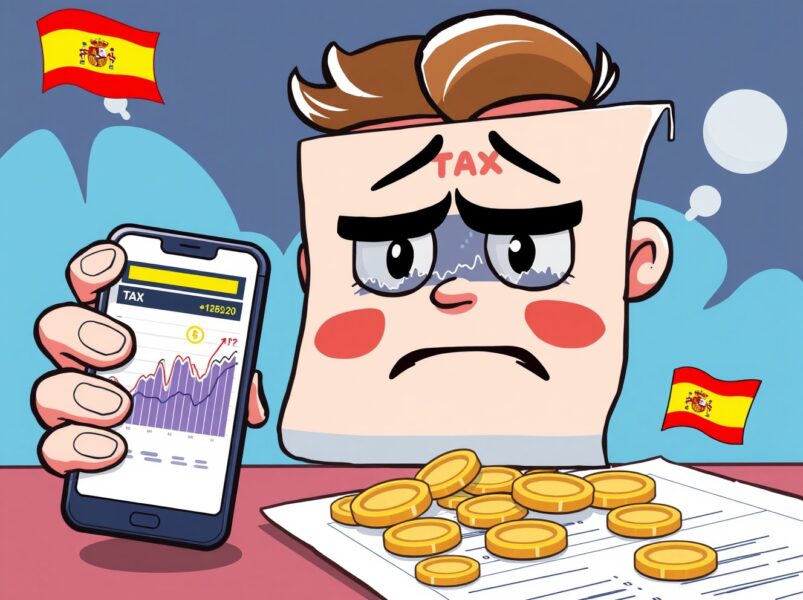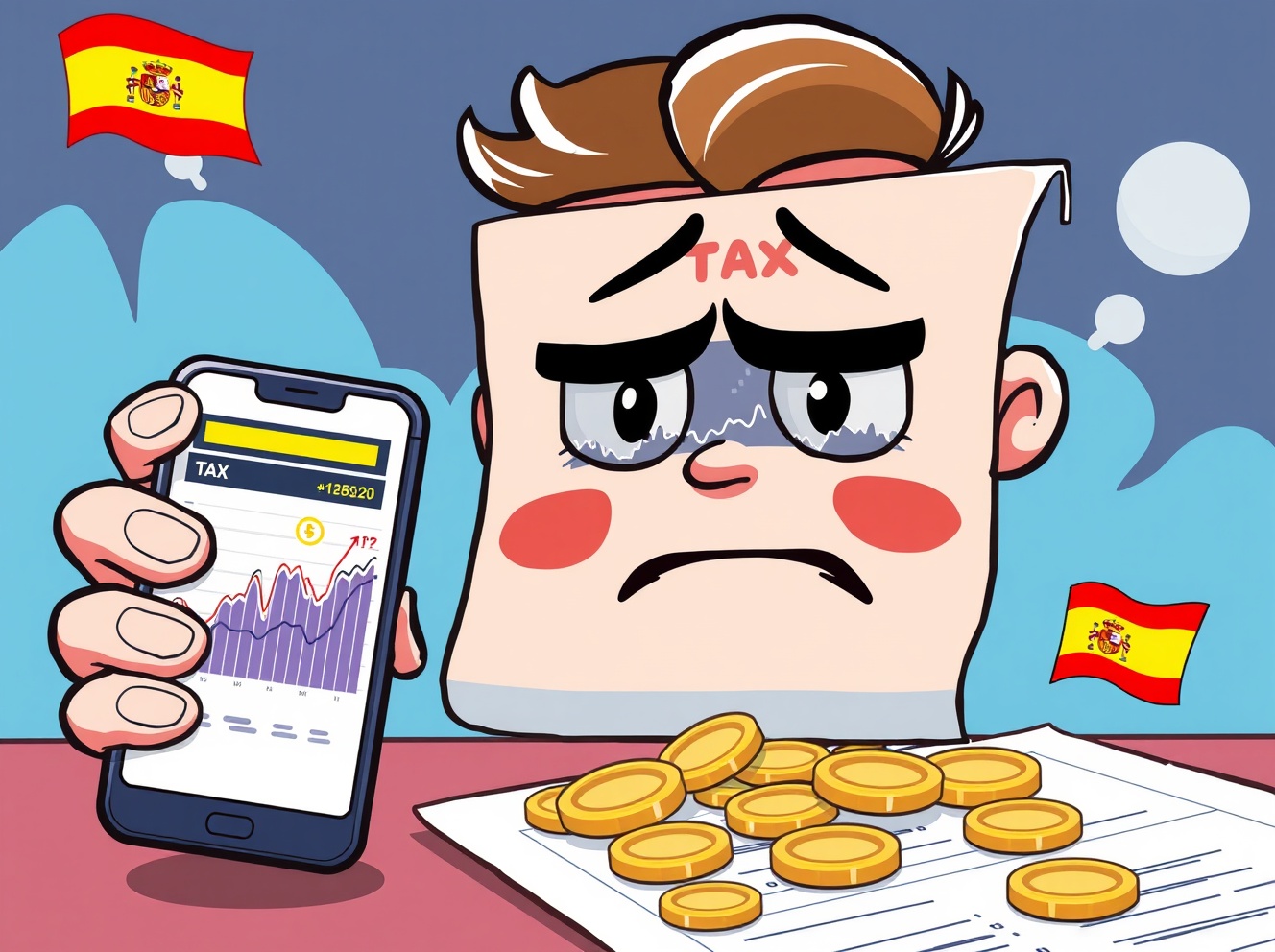Alarming Crypto Tax Rate Hike: Spain’s Sumar Coalition Proposes 47% Levy on Digital Assets

BitcoinWorld
Alarming Crypto Tax Rate Hike: Spain’s Sumar Coalition Proposes 47% Levy on Digital Assets
Spain’s cryptocurrency landscape faces a dramatic shift as the left-wing Sumar coalition proposes a staggering increase in the crypto tax rate. This bold move could see digital asset investors paying nearly half their earnings to the Spanish government, marking one of Europe’s most aggressive cryptocurrency taxation policies.
What Does Spain’s New Crypto Tax Rate Proposal Mean?
The proposed legislation aims to fundamentally change how Spain treats cryptocurrency earnings. Instead of categorizing crypto profits as gains from non-traditional financial assets, the Sumar coalition wants to incorporate them into the general income tax framework. This reclassification would significantly impact how much tax cryptocurrency investors pay.
Under current Spanish tax law, cryptocurrency earnings face a maximum personal income tax rate of 30%. The new proposal would increase this crypto tax rate to as high as 47% for individuals. However, corporations would face a different scenario with a single 30% rate applied to their cryptocurrency activities.
How Will the Crypto Tax Rate Change Affect Investors?
The proposed crypto tax rate increase represents a substantial financial burden for individual cryptocurrency traders and investors in Spain. Consider these key implications:
- Personal tax rates could jump from 30% to 47% on cryptocurrency profits
- Corporate investors maintain a consistent 30% crypto tax rate
- All cryptocurrency earnings would be treated as regular income
- The change eliminates special treatment for digital assets
This shift in the crypto tax rate policy reflects growing government interest in regulating and taxing digital assets more aggressively. Spain joins other European nations in seeking to bring cryptocurrency taxation in line with traditional financial instruments.
Why Is Spain Targeting Cryptocurrency Taxation?
The Sumar coalition’s proposal aligns with broader European Union efforts to increase oversight of digital assets. As cryptocurrency adoption grows, governments worldwide are developing frameworks to ensure proper taxation. Spain’s move to increase the crypto tax rate demonstrates several important trends:
First, it acknowledges the maturing cryptocurrency market and its significant financial impact. Second, it addresses concerns about tax evasion in the digital asset space. Finally, it represents an attempt to standardize taxation across different types of financial instruments.
What Challenges Does the New Crypto Tax Rate Present?
Implementing this increased crypto tax rate faces several practical challenges. Tracking cryptocurrency transactions remains difficult for tax authorities, and enforcement could prove complex. Additionally, the higher crypto tax rate might discourage innovation and investment in Spain’s digital asset sector.
Investors may consider several strategies in response to the proposed crypto tax rate changes:
- Reviewing current cryptocurrency holdings and trading strategies
- Exploring tax-efficient investment structures
- Considering timing of cryptocurrency transactions
- Consulting with tax professionals specializing in digital assets
Looking Ahead: The Future of Spain’s Crypto Tax Rate
The proposed crypto tax rate increase signals Spain’s commitment to regulating digital assets more strictly. While the legislation must still pass through parliamentary processes, its introduction indicates shifting attitudes toward cryptocurrency taxation. The final crypto tax rate that emerges from political negotiations will significantly impact Spain’s position in the European digital asset market.
As governments worldwide grapple with cryptocurrency regulation, Spain’s approach to the crypto tax rate could influence other nations considering similar measures. The outcome will shape how digital assets are treated within national tax systems and potentially set precedents for international cryptocurrency taxation standards.
Frequently Asked Questions
What is the current crypto tax rate in Spain?
Currently, Spain taxes cryptocurrency earnings at a maximum rate of 30% for individuals under the category of non-traditional financial assets.
When would the new crypto tax rate take effect?
The proposal must pass through Spain’s legislative process first. No implementation date has been set, and the final crypto tax rate could change during negotiations.
How does Spain’s proposed crypto tax rate compare to other EU countries?
At 47%, Spain’s proposed crypto tax rate would be among the highest in Europe, though some nations have similar high-rate structures for cryptocurrency taxation.
Would the crypto tax rate apply to all digital assets?
The proposal appears to cover all cryptocurrency earnings, though specific definitions and exemptions might be clarified during legislative review.
Can Spanish cryptocurrency investors reduce their tax burden?
Investors should consult tax professionals about legal strategies, though the proposed crypto tax rate structure offers limited flexibility for individual taxpayers.
How would Spain enforce the new crypto tax rate?
Enforcement mechanisms remain unclear, but likely involve increased reporting requirements and cooperation with cryptocurrency exchanges.
Found this analysis of Spain’s crypto tax rate proposal helpful? Share this important update with fellow cryptocurrency enthusiasts and investors on your social media channels to spread awareness about these significant tax changes.
To learn more about the latest cryptocurrency regulation trends, explore our article on key developments shaping digital asset taxation and institutional adoption.
This post Alarming Crypto Tax Rate Hike: Spain’s Sumar Coalition Proposes 47% Levy on Digital Assets first appeared on BitcoinWorld.
You May Also Like

What to Expect From The Fed This Year After First Rate Cut in 2025

USD/CHF rises on US dollar rebound, weak Swiss economic data
